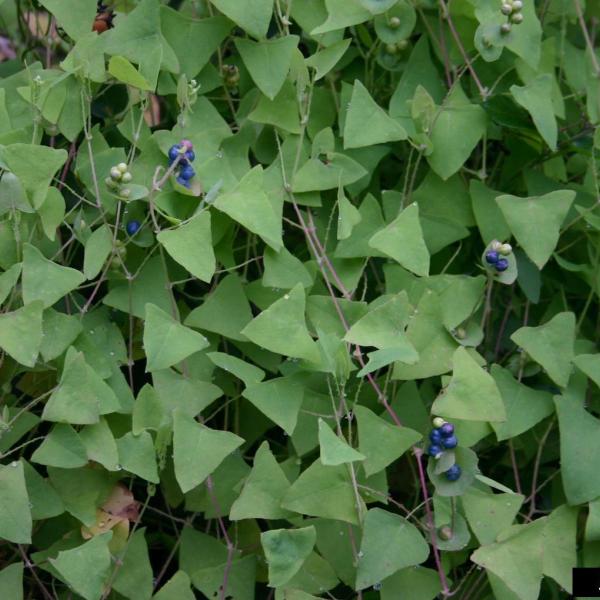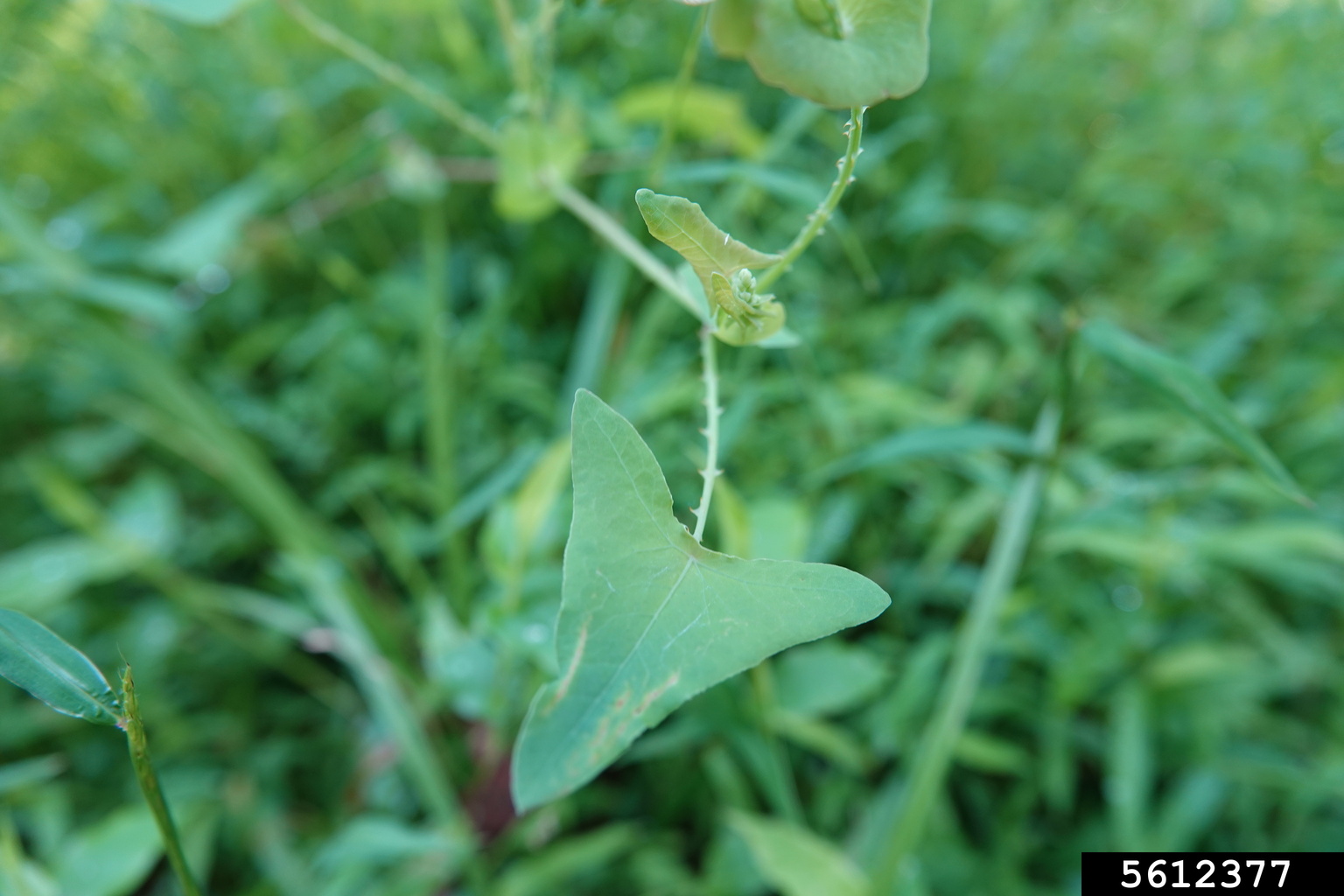
Problem
Mile-a-minute weed (Persicaria perfoliata; basionym Polygonum perfoliatu), an invasive weed of concern was discovered in Charlotte, Vermont, in October. This is the first known instance of this plant in the state. Mile-a-minute weed is a quick-growing, barbed vine that overtops and smothers desirable plant species, causing leaf deformation, dieback, and mortality. In turn, this can decrease populations of desirable plants (small populations of rare plants could be completely destroyed) and the wildlife that depend on them. This impacts natural areas and managed parcels such as reforestation areas, young forest stands, landscape nurseries, Christmas tree plantations, and other areas that are regularly disturbed, such as powerline and utility right-of-ways. Thickets of these barbed plants may also deter recreation.
History
Mile-a-minute weed is a member of the buckwheat family – the same plant family as knotweed. It was accidentally introduced into York County, Pennsylvania in the 1930s via contaminated holly seed. Since then, mile-a-minute weed has been found in all the Mid-Atlantic states, southern New England, North Carolina, Ohio, and Oregon. In 2023, it was found in Maine and Vermont.
Biology
Mile-a-minute weed is an herbaceous annual vine. Seed germination generally occurs between April and July, after which vines can grow up to six inches per day. Leaves are triangular, alternate, light green, and 4 to 7 cm long and 5 to 9 cm wide. Vines are green and delicate, becoming reddish and woody later in the season. The vines and the undersides of leaves are covered with recurved (downward pointing) hooks or barbs that aid the plants’ ability to climb. Mile-a-minute has circular, cup-shaped, leafy structures, called ochreae that surround the stems at leaf nodes. The inconspicuous white flowers grow from these ochreae. When the flowers are pollinated, they form spikes of berry-like fruits that turn from green to white to iridescent blue as they mature. Each fruit contains a single, glossy, black seed.
Mile-a-minute weed is primarily self-pollinating – it does not require pollinators to produce viable seeds – and is a prolific seeder. A single plant can produce up to 3,500 seeds throughout the fruiting season (June through October in Virginia, though that season may be shorter in more northern areas). The tender, annual vines are killed by the first frost and the seeds overwinter in the soil. Mile-a-minute weed seeds require at least an eight-week period at temperatures below 10 degrees Celsius to be able to germinate. Seeds can survive in the soil for up to six years and can germinate at staggered intervals.
Seeds are the primary source of spread for this plant. Vegetative propagation from roots has not been successful. Birds, deer, chipmunks, squirrels and even one species of ant are also known to eat mile-a-minute weed fruit and potentially spread seeds; birds are presumed to be the main cause of long distance spread. Additionally, mile-a-minute weed seeds can float for seven to nine days, which allows for long distance movement in water in infestation in wet areas.
Habitat
Persicaria perfoliata prefers high moisture soils and full sun, though it can tolerate drier soils and part shade. It is generally found warm open areas, such as forest edges, wetlands, stream banks, roadsides, uncultivated open fields, and fence lines.
If you find mile-a-minute weed on your property, please notify anr.fprinvasiveplants@vermont.gov. This is a new invasive species in Vermont, and we have the opportunity to prevent it from becoming established here.
There are a number of options that can be employed to manage Mile-a-minute weed, and the site specifics impact which methods are suitable. Invasive plant experts can help you determine the appropriate options as needed. Once all the plants have been removed, on-going monitoring and management must occur for up to six years in order to exhaust any seeds remaining in the soil.
Cultural Control
Learn to identify mile-a-minute weed so it can be treated on discovery. Maintain a stable plant community; avoid creating disturbances, openings or gaps in existing vegetation; and maintain wide, shade-producing, vegetative buffers along streams and wooded areas to prevent establishment.

Mile-a-minute vine.
Manual and Mechanical Control
Hand-pulling vines – ideally before the barbs harden – can be effective; afterwards, pulling can still be effective but thicker gloves are needed. Pull and bale vines and roots as early in the season as possible to prevent fruiting. Later in the season, use caution when pulling vines to avoid knocking off and spreading fruit. Collected plants can be incinerated or burned, piled and left to dry on site, or bagged and landfilled (least preferred). Dry piles left on site should be monitored and managed a few times each year, especially during the spring and early summer germination period, to ensure any germinating seedlings are destroyed.
Repeated mowing or cutting of low growing populations will reduce flower production and therefore reduce fruit production and potential for spread.
Chemical Control
Mile-a-minute weed can be controlled with commonly used herbicides, however since it is often found growing over the top of desirable vegetation, and spraying the foliage of only the mile-a-minute weed can be challenging. Areas treated with herbicides need to be monitored and retreated as necessary when new seedlings emerge from the seed bank. Always apply pesticides according to the label directions; it’s the law.
Photo credits: Leslie J. Mehrhoff, Bugwood.org